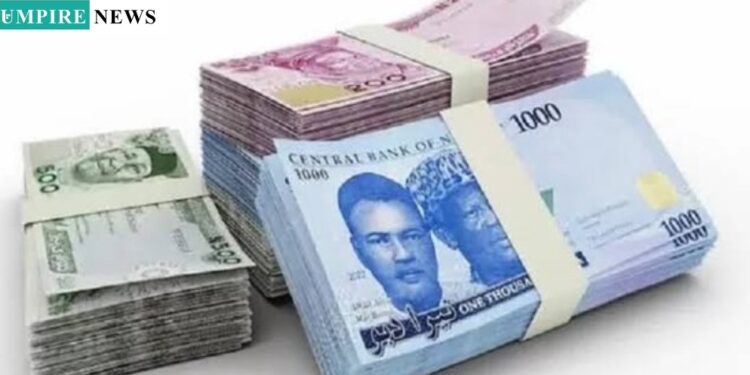Despite the Central Bank of Nigeria’s (CBN) $688.8 million intervention, the naira fell to ₦1,629 per dollar on the Nigerian Foreign Exchange Market (NFEM) yesterday.
Despite CBN interventions improving liquidity in the middle of the month, demand still exceeded supply.
According to data released by the apex bank, the naira depreciated by N29, as the indicative exchange rate increased to N1,629 per dollar from N1,600 per dollar last Friday.
In addition, the naira fell 2.4% and 2.6% in March at the Nigerian Autonomous Foreign Exchange Market window and the parallel market, respectively, compared to the previous month.
The naira depreciated to N1,570 per dollar in the parallel market from N1,565 per dollar last weekend, causing the margin between the parallel market and NFEM rate to widen to N59 per dollar from N35 per dollar last weekend.
According to the latest Afrinvest Monthly Market Report titled ‘Analysing Global and Nigerian Economies & Financial Markets’, the naira dropped to N1,536.82/$ and N1,530.00/1.00 at the NAFEM window and parallel market, respectively.
In its March monthly macroeconomic market analysis, AIICO Capital also stated that there was significant demand pressure on the naira.
You may alao like: CBN to Begin Payment of Forex Backlog
“The naira experienced significant depreciation in March 2025 due to persistent demand pressure in the (Nigerian) foreign exchange market.
“Despite the Central Bank of Nigeria intervening with substantial dollar sales totalling $668.8m, the naira weakened by 2.97 per cent m/m, closing at N1,536.82/$ from N1,492.49/$ at the start of the month,” stated AIICO Capital.
In the period under review, demand remained robust, particularly from foreign portfolio investors and local corporations. AIICO Capital said that the parallel market mirrored this trend, depreciating by about N43.50/$ to N1,536.00/$.
Although liquidity improved mid-month with CBN interventions, demand continued to outstrip supply.
“In the final week, despite continued CBN dollar sales and a slight appreciation of 0.5 0.5 bps, the naira remained under pressure. On a quarterly basis, the naira depreciated by 7 bps q/q at the NFEM window. Meanwhile, external reserves fell by c.$110m to $38.31bn,” AIICO Capital further stated.
According to the investment house’s perspective, the CBN would maintain liquidity in order to stabilise the naira in the near future. The analysis came to the conclusion that “global risks—such as US tariffs and retaliatory measures—may spur volatility and capital flight.”
The interbank Nigerian Foreign Exchange Market saw more volatility in the naira during the last week.
Early in the week, it held steady between N1,525 and N1,535/$ thanks to moderate offshore inflows and steady CBN assistance.
But by midweek, there was a dramatic reversal as offshore demand soared, which was exacerbated by declining oil prices after OPEC+ raised supply and a global sense of caution brought on by Trump’s tariff announcements.
Due to limited supply and intense FX demand pressure, the naira reached N1,570/$. The naira fell 1.97 percent w/w to close at N1,567.02/$, and foreign reserves fell $149 million to $38.15 billion in spite of the CBN’s intervention.


































